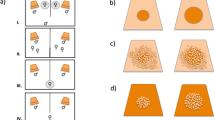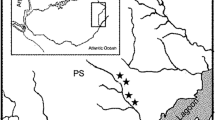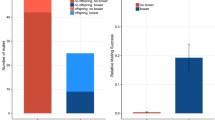Synopsis
The patterns of mate size and parental care of a monogamous cichlid fish,Cichlasoma maculicauda, were studied in Gatun Lake, Panama. Males defend territories which serve as courtship and nest sites. Within a population most mates in pairs are of equal size rank. In each pair the male is larger than the female, probably because most mature males are larger than most mature females. Clutch size increases with female body size. Male size affects breeding success in two ways. First, larger males provide nest sites less susceptible to destructive wave action. Second, young of larger males grow faster than young of smaller males. Large males defeat small males in contests for position in feeding areas, and this may provide their young with better feeding conditions. In the laboratory young growth rates increase with food abundance, and at high levels of food surpass those observed in nature. Fast growth of young reduces their vulnerability to predators and should allow parents to breed more often. Young survival rates improve with the size of the parents, so that larger fish raise more offspring at each breeding attempt. These observations suggest why preference for large mates should occur.
Similar content being viewed by others

References cited
Baerends, G. & J. Baerends-van Roon. 1950. An introduction to the ethology of cichlid fishes. Behaviour Suppl. 1: 1–242.
Barlow, G. W. 1970. A test of appeasement and arousal hypotheses of courtship behavior in a cichlid fish,Etroplus maculatus. Z. Tierpsychol. 27: 779–806.
Barlow, G. W. 1974. Contrasts in social behavior between Central American cichlid fishes and coral reef surgeon fishes. Amer. Zool. 14: 9–34.
Breder, C. M. Jr. & D. E. Rosen. 1966. Modes of reproduction in fishes. Natural History Press, Garden City, N.Y. 941 pp.
Clarke, T. A. 1970. Territorial behavior and population dynamics of a pomacentrid fish, the Garibaldi,Hypsypops rubicunda. Ecol. Monogr. 40: 189–212.
DeMartini, E. 1976. The adaptive significance of territoriality and egg cannibalism in the painted greenling,Oxylebius pictus, a Northeastern Pacific marine fish. Ph. D. thesis, University of Washington, Seattle.
Ehrlich, P. 1975. The population biology of coral reef fishes. Ann. Rev. Ecol. Syst. 6: 211–248.
Fryer, G. & T. D. Iles. 1972. The cichlid fishes of the Great Lakes of Africa: their biology and evolution. T. F. H. Publications, Neptune City, N.J. 641 pp.
Hansen, A. & H. Smith. 1967. Mate selection in a population of sockeye salmon (Oncorhynchus nerka) of mixed age groups. J. Fish. Res. Board Canada 24: 1955–1977.
Hildebrand, S. 1938. A new catalogue of the fresh-water fishes of Panama. Field Mus. Hist., Zoological Series XXII, 4: 217–359.
Hutchinson, G. E. 1967. A treatise on limnology, Vol. 2. Wiley, N. Y.
Lowe-McConnell, R. H. 1969. The cichlid fishes of Guyana, South America, with notes on their ecology and breeding behavior. J. Linn. Soc. 48:255–302.
McKay, F. 1971. Behavioral aspects of population dynamics in unisexual-bisexualPoeciliopsis (Pisces: Poeciliidae). Ecol. 52: 778–790.
McKay, K. 1977. Competition for breeding sites between the cichlid fishes of Lake Jiloa, Nicaragua. Ecol. 58: 290–302.
Noakes, D. L. G. & G. W. Barlow. 1973. Ontogeny of parent-contacting behaviour in youngCichlasoma citrinellum (Pisces, Cichlidae). Behaviour 46: 221–255. Perrone, M. 1975. The relation between mate choice and parental investment patterns in fish who brood their young: theory and a case study. Ph. D. thesis, University of Washington, Seattle.
Perrone, M. & T. Zaret. Parental care patterns of fishes. Amer. Natur. (in press)
Schroder, S. 1973. The effects of density on the spawning success of chum salmon (Oncorhynchus keta) in an artificial spawning channel. MS thesis, University of Washington, Seattle.
Warner, R. R., R. Robertson & E. Leigh. 1975. Sex change and sexual selection. Science 190: 633–638.
Williams, G. C. 1975. Sex and evolution. Princeton University Press, Princeton, N.J. 00 pp.
Zaret, T. & R. Paine. 1973. Species introduction in a tropical lake. Science 182: 449–455.
Author information
Authors and Affiliations
Rights and permissions
About this article
Cite this article
Perrone, M. Mate size and breeding success in a monogamous cichlid fish. Environ Biol Fish 3, 193–201 (1978). https://doi.org/10.1007/BF00691943
Received:
Accepted:
Issue Date:
DOI: https://doi.org/10.1007/BF00691943



